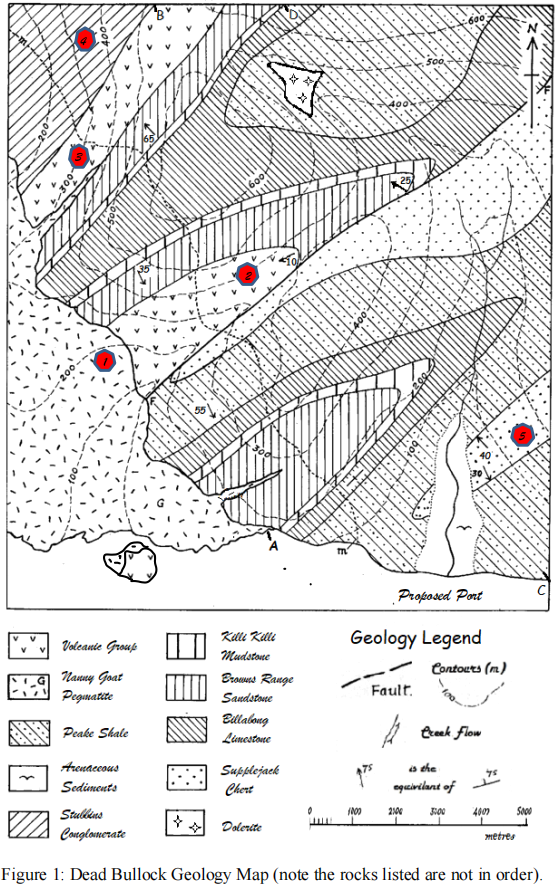CIV2403 Geology & Geomechanics
Hello, dear friend, you can consult us at any time if you have any questions, add WeChat: daixieit
|
Faculty of Engineering & Surveying
|
|||
|
Course Number: CIV2403 Course Name: Geology & Geomechanics
|
|||
|
Assessment No: 2
|
Internal
External |
This Assessment carries 200 of the 1000 marks total for this Course.
|
|
|
Examiner: Dr Ali Mirzaghorbanali
|
Lecturer: John Clewett
|
||
|
Assignment: Assessment 2 - Geology Component
|
|||
|
Date Given: July 2023 Date Due: 28 August 2023
|
Penalty for Late Submission:
|
(See Study Desk/UniSQ assessment policy).
|
|
|
Assignments are to be submitted to USQ. Please use *.doc, *.docx, *.rtf, *.pdf format only to submit your assignment. Please use the naming convention: Geology Report-LastName.pdf where: By submitting this assignment, you agree to the following Student Declaration: I hereby certify that no part of this assignment has been copied from any other student’s work or from any other source except where due acknowledgement is made in the assignment. No part of this assignment has been written for me by any other person except where such collaboration has been authorised by the Examiner concerned. |
|||
CIV2403 S2, 2023 Geology Assignment.
An existing mining company wants to extract gold mineralisation from the Dead Bullock region. It has been discovered that there is an association between the mafic rich volcanic flows, the proximity of faults and the movement of fluids containing sulphides.
In order to extract this mineralisation, a rough estimate of the volume of the deposit needs to be found coupled with mine haulage routes connecting the mineralisation regions with a port facility in the proximity of the creek.
An initial application with the environmental department for the haulage road connecting the mineralised areas with the port facility was rejected on the following basis:
• The Nanny Goat Pegmatite coastland has been declared a conservation site because of the Leatherback Turtle breeding locations and a recent discovery of a population of Boronia granitica within the region.
• After the conversation park was studied, it was found that the limestone geology hosted a rare species of Pomaderris oraria that provided food for the Brush-tailed Rock-wallaby and Glossy Black Cockatoo.
In order to progress the mining operation, the company is seeking the most efficient way of connecting the mineralisation areas and the port facility through an underground tunnel thus avoiding the pegmatite and limestone.
Task A) Regional Geology Task:
An annotated geological column (1 page) needs to be constructed along with a brief geological history (1
page) of the region to provide the overall context for the mining and infrastructure development, particularly focusing on any regional faults, structural weaknesses and unconformities that exist within the region.
The geological column needs to include all the rocks types, including those found in the boreholes and
should include structural features such as faults and deformation (Figure 1, Appendix 1 & 2). The geological map shows only the parent lithologies and the metamorphic rocks associated with the metamorphic aureole need to be included within the geological column.
Factors that should be identified within the geological history include unconformities, igneous events,
deformational events and metamorphic grade. Faults should be identified along with the movement of these faults. The plate tectonic setting(s) needs to be identified, where possible, and included within the geological history. (40 marks)
Task B) Cross Sections:
Three cross sections, with no vertical exaggeration, need to be constructed that best highlight the geology of the region These should focusing on the regional geology within the region (1 -3 pages) and should be
referred to within the other sections. Geotechnical details regarding the rock types should be included, such as faulting, and referred to within other sections. Cross-Sections include:
1. An initial cross section along AB.
2. A second cross section along CD.
3. A detailed haulage road on a plan view including a third cross section along the proposed haulage road. (60 marks)
Task C) Pre-Pegmatite Geology Map
Construct a geological map that shows the geology of the entire region, including under the ocean, prior to the intrusion of the pegmatite asthis will help identify the size of the geological resource associated with Task D and further areas of mine development.
Along with the geological base map prior to the intrusion of the pegmatite, the following is required:
• Infer the geological boundaries, including fault zones and folding for the region.
• Identify the igneous rock type listed of the Pegmatite and Dolerite, according to the International Union of Geological Sciences use of the Streckeisen international classification system and provide an image of the rock that you have identified.
• Compare geophysical techniques that could be used to confirm the volume of the gold mineralisation. (40 marks)
Task D) Gold Mineral Resource Estimate and Mining Infrastructure
Estimate the geological gold resource based on the geological modelling that has been undertaken for the
Dead Bullock region (Appendix 2). While this will be only an initial rough estimate, assumptions should be detailed, such as the economic depth of the deposit, mining technique(s) employed and cut-off grade.
Determine the best route for extracting the mineralisation to the proposed port avoiding overland haulage over the limestone or pegmatite. Show the route on a geological map and justify the choice of the route.
Discuss the geotechnical aspects of the geological material the tunnel goes through (Appendix 1). Estimate the amount of material to be removed and include an overall tonnage for each rock type.
Consider the role that rehabilitation takes and outline the key components of rehabilitation and when these components of rehabilitation should occur. (60 marks)

2023-08-21